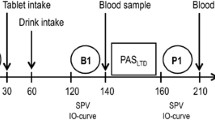Abstract
The integrative activity of the brain is particularly related to the telencephalic level of CNS. Drugs affecting learning and memory usually interfere with the reticular or limbic system, and are either stimulants or sedatives. In contrast, Piracetam (U C B 6215) is an atoxic compound which, up to dosages such as g/kg, does not interfere with autonomic functions, general behavior, level of wakefulness, the limbic system, etc. Yet, in dosages such as mg/kg it improves several learning and memory abilities, protects against experimental amnesic agents, facilitates EEG recovery after severe hypoxia and also facilitates interhemispheric transfer (transcallosal evoked potential and learned behavior). Discussion is made on the basis of the particular neuropharmacology as well as on the available biochemical and human clinical correlations to emphasize the selectivity of this compound on telencephalic integrative mechanisms. Piracetam is presented as the first-comer of a new psychotropic class for which the termnootropic is proposed.
Similar content being viewed by others
References
Bures, J., and Buresova, O.: Applications recentes de la dépression envahissante corticale (cortical spreading depression) à l’étude du comportement. 161–178.In A. M. Monnier, Ed., Actualités Neurophysiologiques, Paris, Masson and Cie, 1968, pp. 347.
Giurgea, C., Moyersoons, F., and Evraerd, A. C.: A GABA related hypothesis on the mechanism of action of the antimotion sickness drugs.Arch. Int. Pharmacodyn. Ther. 166:238–251, 1967.
Giurgea, C., Mouravieff-Lesuisse, F., and Leemans, R.: Corrélations électropharmacologiques au cours de l’anoxie oxyprive chez le lapin en respiration libre ou artificielle.Rev. Neurol. (Paris),122:484–486, 1970.
Giurgea, C., Lefevre, D., Lescrenier, C., and David-Remacle, M.: Pharmacological Protection against Hypoxia induced Amnesia in rats.Psychopharmacologia (Berlin),20:160–168, 1971.
Giurgea, C., and Mouravieff-Lesuisse, F.: Pharmacological studies on an Elementary Model of Learning. The fixation of an experience at spinal level: Part I, Pharmacological Reactivity of the Spinal Cord fixation time.Arch. Int. Pharmacodyn. Ther.,191:279–291, 1971.
Giurgea, C., and Mouravieff-Lesuisse, F.: Effet facilitateur du Piracetam sur un apprentissage répétitif chez le rat.J. Pharmacol. 3:17–30, 1972.
Giurgea, C., and Moyersoons, F.: In the pharmacology of cortical evoked potentials.Arch. Int. Pharmacodyn. Ther.,199:67–78, 1972.
Giurgea, C.: Vers une pharmacologie de l’activité intégrative de cerveau. Tentative du concept Nootrope en psychopharmacologie.Actual. Pharmacol. (Paris), In Press, 1972.
Gobert, J. G.: Genèse d’un médicament: le Piracetam métabolisation et recherche biochimique.J. Pharm. Belg. 27:281–304, 1972.
John, E. R.: Mechanisms of Memory, New York-London, Academic Press, 1967, p. 468.
Konorski, J.: Intégrative activity of the brain. Chicago and London, The University of Chicago Press, 1967, p. 530.
McGaugh, J. L., and Petrinovitch, L. F.: Effects of drugs on learning and memory.Intern. Rev. Neurobiol. 8:139–196, 1965.
Pede, J. P., Schimpfessel, L., and Crokaert, R.: The action of Piracetam on the oxidative phosphorylation.Arch. Int. Phys. Biochem.,79:1036, 1971.
Penfield, W.: Speech, perception and the uncommitted cortex.In Brain and Conscious Experience. Springer Berlin Heidelberg, N. Y. 1966; p. 591.
Sara, S., and Lefevre, D.: Hypoxia induced amnesia in one-trial learning and pharmacological protection by Piracetam.Psychopharmacologia (Berlin),25:32–40, 1972.
Sivadon, P.: Le Piracetam: médication originale at particulièrement intéressante dans les toxicomanies. 5ème Congrès de Psychiatrie. Mexique, 1971.
Sugar, O., and Gerard, R. W.: Anoxia and Brain Potentials.J. Neurophysiol.,1:558–572, 1938.
Wolthuis, O. L.: Experiments with UCB 6215, a drug which enhances acquisition in rats: its effects compared with those of metamphetamine.Eur. J. Pharmacol. 16:283–297, 1971.
Author information
Authors and Affiliations
Additional information
Partially supported by the IRSIA Research Grant No. 1801.
Rights and permissions
About this article
Cite this article
Giurgea, C. The “nootropic” approach to the pharmacology of the integrative activity of the brain 1, 2. Conditional Reflex 8, 108–115 (1973). https://doi.org/10.1007/BF03000311
Issue Date:
DOI: https://doi.org/10.1007/BF03000311




